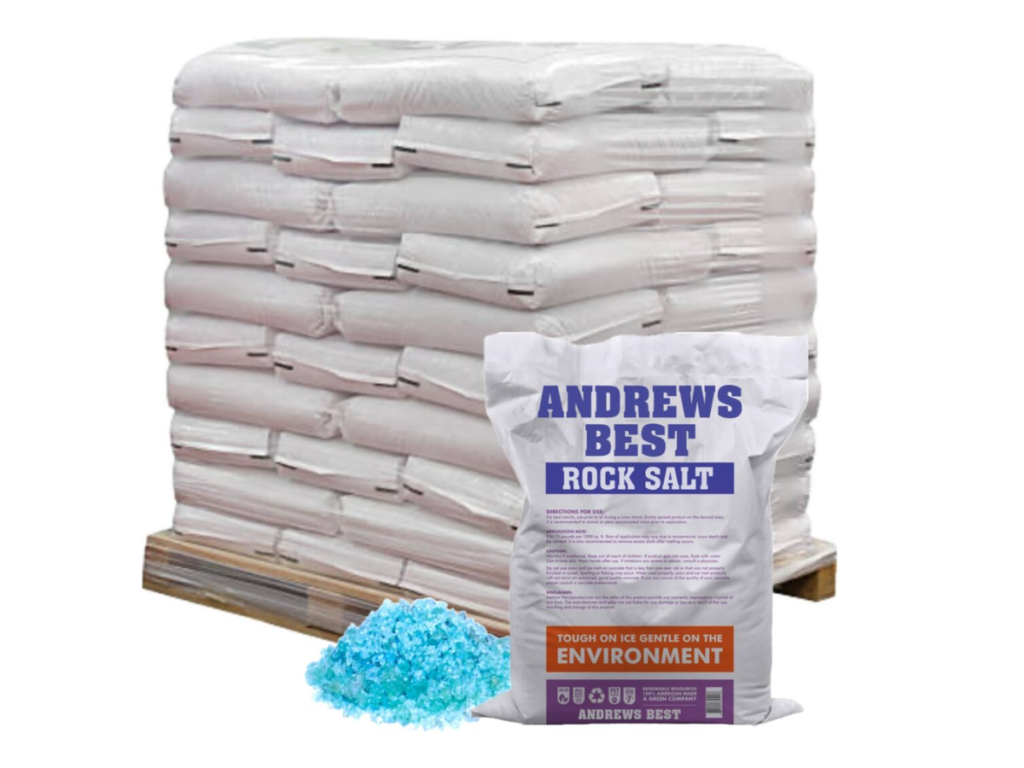Salt bags play a crucial role in combating snowfall in many cities worldwide, including yours. However, ensuring the longevity and effectiveness of these salt bags can be a challenge, especially when exposed to the harmful effects of the sun’s UV rays. Let’s delve into the risks salt bags face and the benefits of UV inhibitor (UVI) protection.
The Hidden Threat: How Sunrays Damage Salt Bags
Discoloration: A Telltale Sign of Sun Damage:
The first harm of prolonged sun exposure is often discoloration.
Salt bags left out in the sun for extended periods can gradually lose their vibrant colors, turning dull and faded.
Weakening of Film: A Structural Weakness:
But discoloration is just the tip of the iceberg when it comes to sun damage.
The real danger lies in the weakening of the bag’s film—the protective layer that holds the salt in place. Prolonged exposure to UV rays can cause the film to deteriorate. It leads to structural weaknesses that compromise the integrity of the bag. The weakened film is more prone to tears and punctures. As a result, it increases the risk of product wastage and contamination. A bag with weakened film is like a ticking time bomb, waiting to rupture and spill its contents at the most inconvenient moment.
Cracks and Spillage: A Nightmare Scenario:
And then there are the cracks—the silent killers of salt bags. Cracks may start small, barely visible to the naked eye, but they can quickly escalate into a full-blown catastrophe. A single crack in the bag’s film can allow salt to spill out unexpectedly, creating a mess and posing a safety hazard. Imagine trying to spread salt on icy sidewalks, only to find that your bag has sprung a leak, leaving you with a trail of salt behind you. It’s not just inconvenient—it’s downright dangerous.
The Domino Effect: Logistical Challenges:
But the damage doesn’t stop there. Discolored, weakened, and cracked salt bags can create a domino effect of logistical challenges during snow emergencies.
Imagine trying to deploy salt bags to clear roads and sidewalks, only to find that half of them are damaged beyond repair. It’s a nightmare scenario that can significantly hamper snow removal efforts and put public safety at risk. And all because of the sun’s relentless rays.
In the upcoming points, we will learn about how UVI protection can be useful when it comes to protecting your salt bags from the sun.
What are UVI or UV Inhibitors?
UV inhibitors are chemical additives that protect plastic products from ultraviolet light exposure. They are sometimes referred to as UV absorbers and stabilizers.
They shield the plastic from the majority of the UV light’s damaging radiation by absorbing its high energy. UV inhibitors function by neutralizing unstable chemical species to stop further deterioration or by absorbing UV radiation and turning it into heat.
Because these stabilizers absorb UV rays and release them as low-level heat, the bags are resistant to UV radiation. Please be aware that these stabilizers do degrade over time, and you should inquire about your bag’s rating—which is typically expressed in hours of exposure—with your supplier or distributor.
How UV Inhibitors are Applied to the Bag?
To prevent UV deterioration, UV stabilizers are chemical additives that are included with polypropylene (PP) during the manufacturing process of fiber-infused polypropylene (FIBC) bags. These additives can be created as part of a master batch or blended with the base polymer during manufacture. Generally, they are added at extremely low amounts, at 0.1–0.5% of the polymer.
The Benefits of Salt Bags with UVI Protection
Extended Lifespan:
Without UVI protection, salt bags can deteriorate within six months of exposure to sunlight. However, with UVI protection, their lifespan can be prolonged significantly, ranging from 30 days to a year, depending on the rating and application method.
Optimal Efficiency:
By preserving the integrity of salt bags, UVI protection ensures that they remain effective in combatting icy conditions. This means fewer disruptions and logistical challenges during snow emergencies, allowing for smoother snow removal efforts.
Cost Savings:
Investing in UVI protection may seem like an added expense, but it can actually lead to cost savings in the long run. By prolonging the lifespan of salt bags, UVI protection reduces the need for frequent replacements, saving money and resources in the process.
Switching to the UVI Protected Salt Bags
Investing in UVI protection for salt bags is a sensible decision, given the critical role they play in winter maintenance. Whether it’s preventing discoloration, strengthening the bag’s film, or reducing the risk of cracks and spillage, UVI protection offers a comprehensive defense against UV damage. Even salt bags stored away from direct sunlight can benefit from UVI protection, safeguarding them against potential deterioration.
Conclusion:
As winter approaches, ensuring the readiness of salt bags is essential for maintaining safety and accessibility during snow events.
By investing in salt bags with UVI protection, you can mitigate the risks associated with UV damage and prolong the lifespan of salt bags, ensuring they remain effective throughout the winter season.
Don’t wait until the first snowfall to discover that your salt bags have deteriorated—take proactive steps to protect them with UVI protection today.





